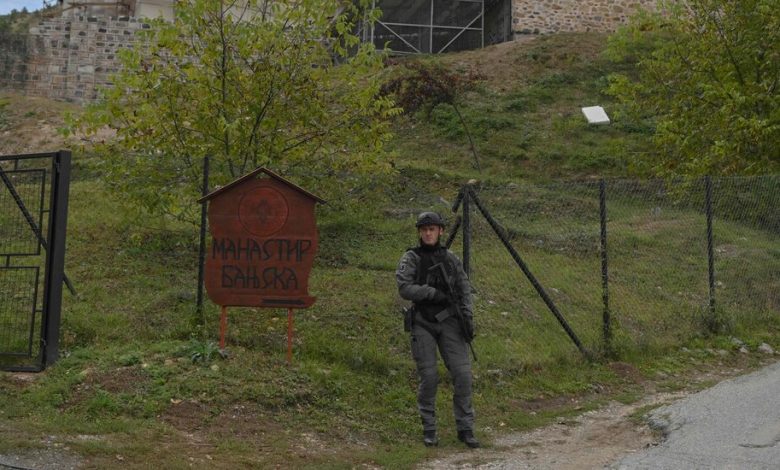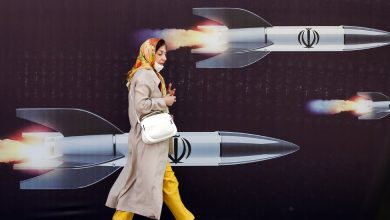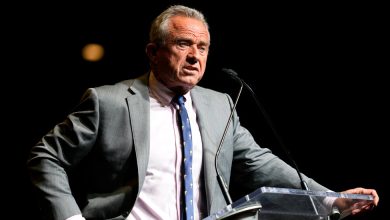Why Is the U.S. Telling Serbia to Move Troops From the Kosovo Border?

As the White House called on Friday for Serbia to roll back its troops amassed on the Kosovo border, United States officials described that military presence as “destabilizing” and a worrying sign of potential escalation in the tensions between Serbia and Kosovo.
The announcement came five days after an attack in northern Kosovo in which ethnic Serbian gunmen stormed a village and then barricaded themselves in a monastery, a violent episode that led to the deaths of four people, including a Kosovar police officer.
John F. Kirby, a spokesman for the Biden administration, denounced that attack on Friday and said that American officials had reached out to the leaders of Serbia and Kosovo to urge them to engage in diplomatic dialogue.
He also said that more NATO troops would be deployed to the area, although he did not say whether American officials expected the flare-up to devolve into a military conflict.
Here is what to know about the latest turn in a clash that dates back to the Balkan conflicts of the 1990s.
What happened in the latest violence?
Last Sunday, several dozen ethnic Serbian gunmen used armored vehicles to storm a village in northern Kosovo and then holed up in a nearby Serbian Orthodox monastery. They battled the Kosovar police from that position, and a Kosovar officer was killed along with several of the attackers.
In the following days, Serbian and Kosovar leaders blamed each other for the violence. The Kosovo authorities also said publicly that President Aleksandar Vucic of Serbia had supported the gunmen.
“Kosovo is under attack,” President Vjosa Osmani of Kosovo told Reuters on Thursday, adding that the gunmen had “simply exercised the intentions and the motives of Serbia as a country and Vucic as the leader.”
American officials described the attack as having been highly organized and said that the attackers probably had substantial resources behind them. Mr. Kirby said the gunmen had disposed of over a dozen sport utility vehicles that had been used to transport weapons with “alarming sophistication.”
He said the weapons represented a threat not only to Kosovo, but also to international troops stationed there. A NATO-led peacekeeping mission has operated in Kosovo since 1999, and the alliance has several thousand troops stationed in the country.
Fighting also broke out this spring when Kosovo’s ethnic Albanian authorities sent security forces into several towns to take control of municipal buildings and install the ethnic Albanian mayors who had won the local elections. Local Serbs had mostly boycotted the votes.
What’s behind the conflict?
The latest escalation is part of a dispute over the status of Kosovo, which declared its independence from Serbia 15 years ago, almost a decade after a 78-day bombing campaign by NATO that drove out Serb forces who had engaged in brutal mistreatment of ethnic Albanians.
Although the United States and many European countries have recognized an independent Kosovo, Serbia — along with its key allies, Russia and China — still does not recognize Kosovo’s independence. Serbia has called the split-off a violation of United Nations Resolution 1244, which dates to the end of the Kosovo war.
Mr. Vucic and other Serbian leaders claim Kosovo as being the “heart” of their country, in part because it is home to many revered Orthodox Christian sites. Mr. Vucic has ruled out recognizing Kosovo and has vowed to “protect” ethnic Serbs there.
Serbian nationalists in Kosovo have been joined by more moderate Serbs in demanding the implementation of a 2013 deal brokered by the European Union that calls for a measure of self-rule for Serb-dominated municipalities in Kosovo’s north, a provision that Kosovo has not upheld.
In February, leaders from Kosovo and Serbia tentatively accepted a European Union-mediated peace deal, but nationalists on both sides rejected it.
What is the regional backdrop to the tensions?
Tensions between the two ethnic communities have flared regularly over the past decade, making the region a hub of scattered violence.
Clashes erupted in July 2022 in response to a law that would require ethnic Serbs living in Kosovo to switch from Serbian license plates to Kosovar ones.
The recent escalations of hostilities have come asRussia’s invasion of Ukraine has absorbed the attention of Kosovo’s key allies, the United States and the European Union.
Serbia, a candidate to join the European Union, has been a close partner of Moscow’s for centuries. Although Serbia voted in favor of a United Nations resolution condemning the Russian invasion of Ukraine in March 2022, Serbia has not joined Western countries in imposing sanctions on Moscow over the war.
Joe Orovic and Andrew Higgins contributed reporting.



